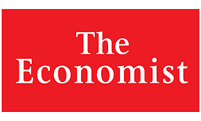Report: The Future of Healthcare
Sector: Healthcare
Publication Date: 2020
Marc Lemonnier, Founder & CEO at Antabio
The global burden of infections resistant to existing antimicrobial medicines is growing at an alarming pace while major pharmaceutical companies are backing away from developing new antibiotics. We spoke with Marc Lemonnier of Antabio, one of only a handful of private firms dedicated to new antibiotics R&D.
What was the original inspiration behind setting up Antabio in the Midi-Pyrénées over a decade ago? And what have been the major milestones attained and challenges encountered to date?
I was trained as a bacterial geneticist, received a PhD Thesis from the University of Toulouse, the city where Antabio was founded and based ever since. My academic work, prior to founding Antabio, was focused on studying how bacteria were capable of developing mechanisms to infect their hosts but also to overcome the immune response or to become resistant to the drugs we threw at them. That research led to ideas on new mechanisms, new targets for novel antibacterial drugs. And that is the original inspiration that gave birth to Antabio. Since then, we have assembled a great team of expert antibiotic developers, and together we have been able to build a broad portfolio of innovative development programmes focusing on WHO’s critical priority pathogens. Our programmes have received numerous awards, including two Seeding Drug Discovery Awards from the Wellcome Trust and a CARB-X award
Please tell us about your broad pipeline of novel antibacterial treatments focused on drug-resistant life threatening infections. Why did you choose to focus upon these particular drug candidates? And how are they progressing in terms of development timeframes?
Our main focus is in addressing the problem of infections caused by bacteria that are resistant to carbapenems. This is the number one antibacterial threat globally, and WHO’s top priority. Carbapenems are widely used drugs, clinicians’ favourite for treating severe infections at the hospital. But they are becoming increasingly ineffective due to the spread of bacteria that produce a variety of carbapenem-destroying enzymes call NDM, OXA or KPC. Antabio is developing drugs that inhibit the activity of those enzymes, thus restoring the effectiveness of carbapenems. Thanks to our inhibitors, severely ill patients will be able to be treated with carbapenems again. We protect both the patients and carbapenems in a way.
We also have another very exciting programme that aims at enhancing the effectiveness of treatments for Cystic Fibrosis sufferers. These patients unfortunately have limited life expectancy mainly due to them developing chronic lung infections that are extremely difficult to eradicate. Antabio is developing an inhaled treatment to help control this bacterial infection, thus enhancing the effectiveness of the therapy and ultimately providing a significant benefit to those patients. That programme has received significant funding, up to $8.9m, from CARB-X.
All of our programmes are at the preclinical stage, meaning that we are collecting the data that is needed to get the permission to conduct clinical trials by the regulatory authorities. Our most advanced programme targeting NDM superbugs is scheduled to initiate phase 1 clinical trials in 2020.
With an estimated 700,000 people already dying each year globally as a result of antibiotic resistant superbugs, what steps do you think need to be taken to properly get a grip on this clearly escalating public health challenge?
This is really a ‘One Health’ problem, meaning that, similar to climate change, it is an environmental problem that goes hand in hand with a human and animal health emergency. The misuse and overuse of antibiotics has created this problem, so it’s only through appropriate use of antibiotics and good stewardship that we can hope to control this crisis. We must protect the few safe and effective antibiotics that we are left with. And then there is a broken market that is literally paralysing the development of the next generation of antibiotics. Society is used to cheap generic antibiotics and is not prepared to pay for new expensive drugs, even if those drugs are going to be much safer and will save lives.
How do you explain the exodus of big pharma from the antibiotics R&D space and diminishing pipeline of drug development candidates when unmet need remains so high?
Big pharma has left the field simply because the current business model for antibiotic R&D is broken. We are asking these companies to incur many years of R&D spending and post-marketing losses with no guarantee whatsoever that they will ever recoup their investment. The reason is because we want the next generation of these life-saving drugs to be used appropriately, and we also want them to be sold at a reasonable price. This means we are asking companies to invest more and then limit their revenues. So, of course, this equation does not work, and pharma leaves the field. This dysfunctional model impacts all players across the food chain, from private investors to innovators in small biotechs and academia, and so it is no surprise that the pipeline of novel antibiotics is diminishing. On the positive side, we see some light at the end of tunnel thanks to public-partnerships like CARB-X and other initiatives like IMI in Europe or BARDA in the US that are providing substantial funding across the drug development process. This is helping reinvigorate the pipeline, but the situation is extremely fragile in the absence of a sustainable marketplace, which we currently don’t have.
Since small biotech outfits tried to pick up the slack, many have struggled financially. How easy has it been to raise the requisite funding for Antabio’s development programme and to keep the company on a stable financial footing?
The situation with regard to funding antibiotic development is as tough as it gets, let’s face it, and this is true for all companies, at all stages, in every corner of the world. Today, the best possible team with the best possible product would still struggle to secure funding, simply because the market is not there. The lesson we at Antabio have learned from recent bankruptcies in the field is that only strong differentiation and focus on true unmet needs can save you. It means that, while the market is being fixed, you need to focus on things that you can reasonably control and predict and that have objective value. In other words, you need to focus on clinical benefit and patient’s need.
With a view to overcoming perceived market failure in the antibiotics space, IFPMA has been a vocal proponent of replacing early stage research subsidies with market entry rewards. Do you agree with the wisdom of such an approach?
I am unaware that IFPMA has proposed to replace research subsidies with market entry rewards. If that was the case, I would strongly disagree. Several independent studies have shown that you need both push and pull incentives to be able to repair the broken model of antibiotic R&D. Reducing the costs of R&D, while keeping the highest standards to ensure safety and efficacy, and enabling a predictable ROI for investors are both part of the equation to solve the antibiotic crisis. They go hand in hand. Moreover, the amounts of funding needed to support R&D and those needed to enable a sustainable market for antibiotics are not in the same ballpark, so the whole idea of a ‘replacement’ wouldn’t make much financial sense either. I think IFPMA, as all stakeholders in this area, understand that we need to tackle the problem through different angles, incentivising R&D being one of them.
A number of suggestions have been floated that would decouple ROI from the volume of antimicrobials prescribed. These have, among others, included the so-called ‘Netflix Model’ whereby governments would pay a subscription to gain access to a suite of antibiotics, and the concept of ‘transferable exclusivity vouchers.’ From a drug developer perspective, what sort of model do you most favour and why?
I think there won’t be a one-size-fits-all solution to this problem. Different models will apply to different countries, but we need to start being creative now because we are running out of time. Pilot pull incentive models need to be tested quickly, and here the UK government is to be saluted for taking the lead with their subscription Netflix/Spotify model. Other models have been reviewed in a recent white paper on pull incentives by the BEAM alliance, and alliance of more than 60 European SMEs working in antimicrobial development. All of these models have their pros and cons, but the bottom-line is that we cannot wait for the ‘perfect’ model, we need to start testing new ideas or this whole industry may collapse.
In the light of recent announcements by payers in the UK and United States, which markets do you consider to be at the forefront of putting in place market entry rewards structures that will incentivise a new generation of antibiotic ‘super-drugs’?
This is a global problem, that needs a global solution. Of course the main pharmaceutical markets, US and Europe, need to take the lead in order to build momentum and generate data for other markets to join.
What are your next priorities for developing Antabio as a business?
We have a very strong team, and we are building a broad portfolio of innovative and differentiated products addressing WHO’s critical priorities. We want to be ready to deliver products that will provide real clinical benefit to patients and that will have tangible value in the marketplace when the financial storm is over. We are also developing our footprint in Asia and Eastern Europe, especially China and Russia, because our products directly address specific unmet needs in those countries. So building partnerships in those geographies is a priority for us.

 Related Content
Related Content
The Advent of Value-Based Care Models
Medtronic is committed to working with the health community to better leverage technologies and services that improve patient outcomes, integrate care delivery and support the global shift toward value-based healthcare, says Rob ten Hoedt, Medtronic’s Executive Vice President.
Going Digital: Advancing the Future of Health
GE Healthcare has developed NASA-style command centres for hospitals allowing them to monitor critical data in real time to ensure efficient patient care. Kieran Murphy, Global CEO of GE Healthcare, talks about the benefits of artificial intelligence while sharing his vision of the digital healthcare transformation.
Drone Delivery Solves Last Mile Medical Challenge
Zipline, a drone operator specialising in delivery of medical supplies
Addressing the Global Antibiotics Crisis
The global burden of infections resistant to existing antimicrobial medicines is growing at an alarming pace while major pharmaceutical companies are backing away from developing new antibiotics. We spoke with Marc Lemonnier of Antabio, one of only a handful of private firms dedicated to new antibiotics R&D.
Report Sponsors




























